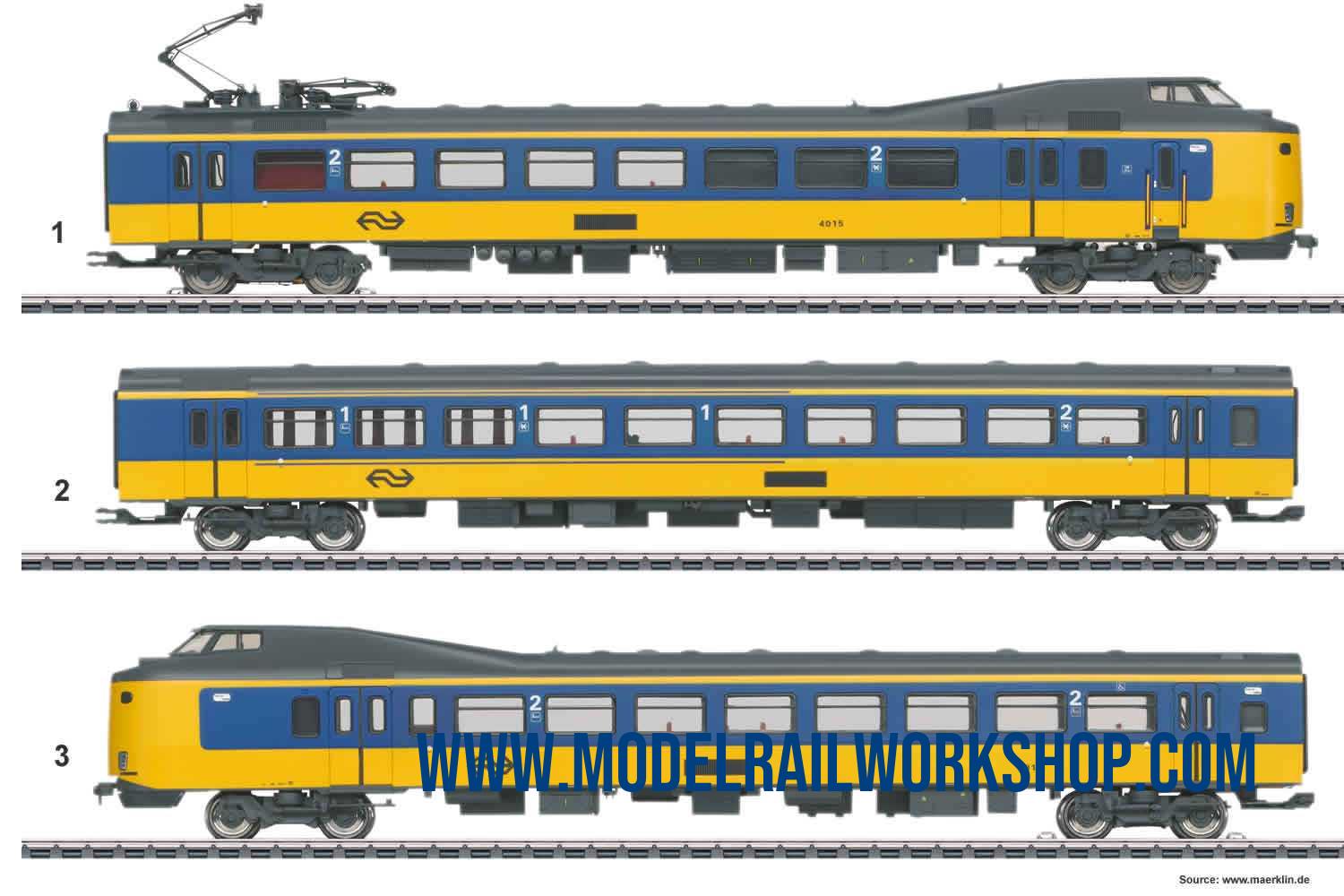
| KEY DATA | |
|---|---|
| Product Name | 39425- Electric Rail Car train with 3 cars - Koploper - class ICM-1 |
| Object type | Locomotive-Electric |
| Product Line | Märklin |
| Era | 1970-1990 (IV) |
| Manufactured years | 2023-2024 |
| Type of housing | Synthetic/Metal |
| Length | Total: 86.6 cm |
| Technology | MFX+ |
| Railway company | NL - NS Nederlandse Spoorwegen |
| Märklin RRP (Year) | 559€ (2023) |
| Url to Märklin | Klick to GoTo www.maerklin.de |
| No | Obj.No | Obj.txt | Category | Description |
|---|---|---|---|---|
| 39425 | 4015 | 2 2 | mBk | Motor end car - Yellow blue - 2nd cl |
| 39425 | - | 1 1 2 | AB | Intermediate car Yellow and blue - 1st/2nd cl |
| 39425 | 4015 | 2 2 | sBk | Control end car - 2nd cl |
| Description | |
|---|---|